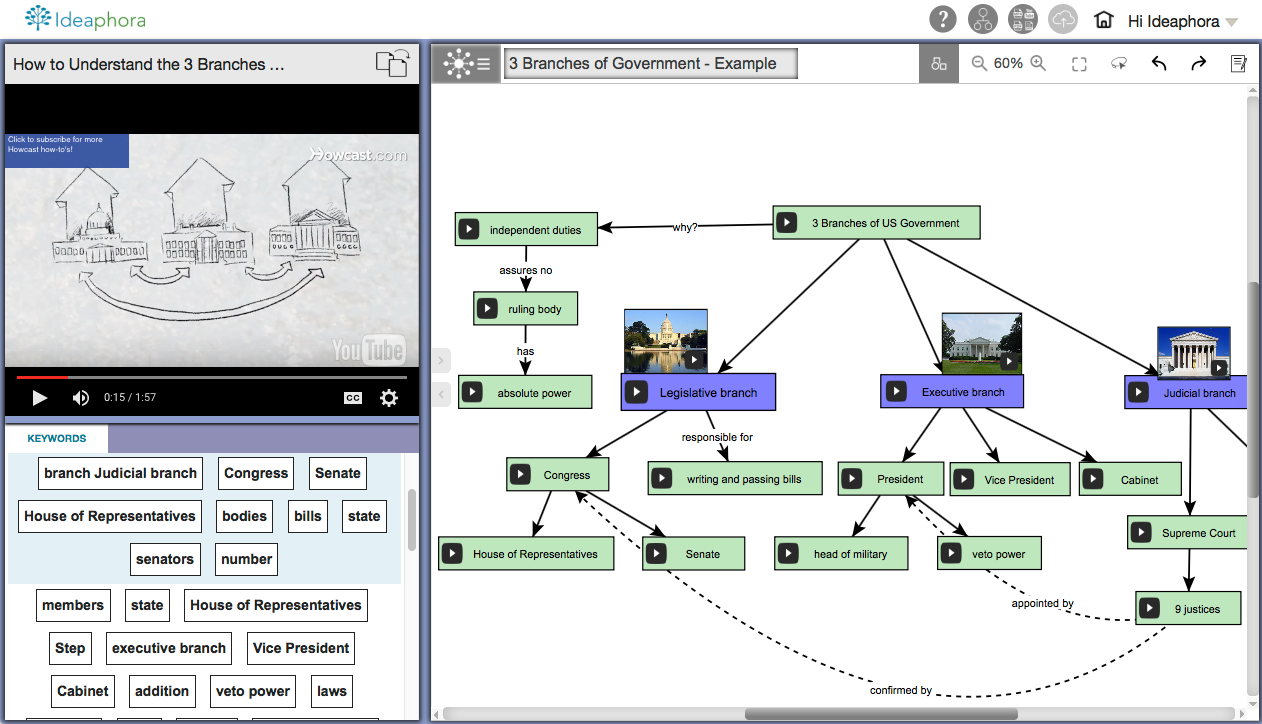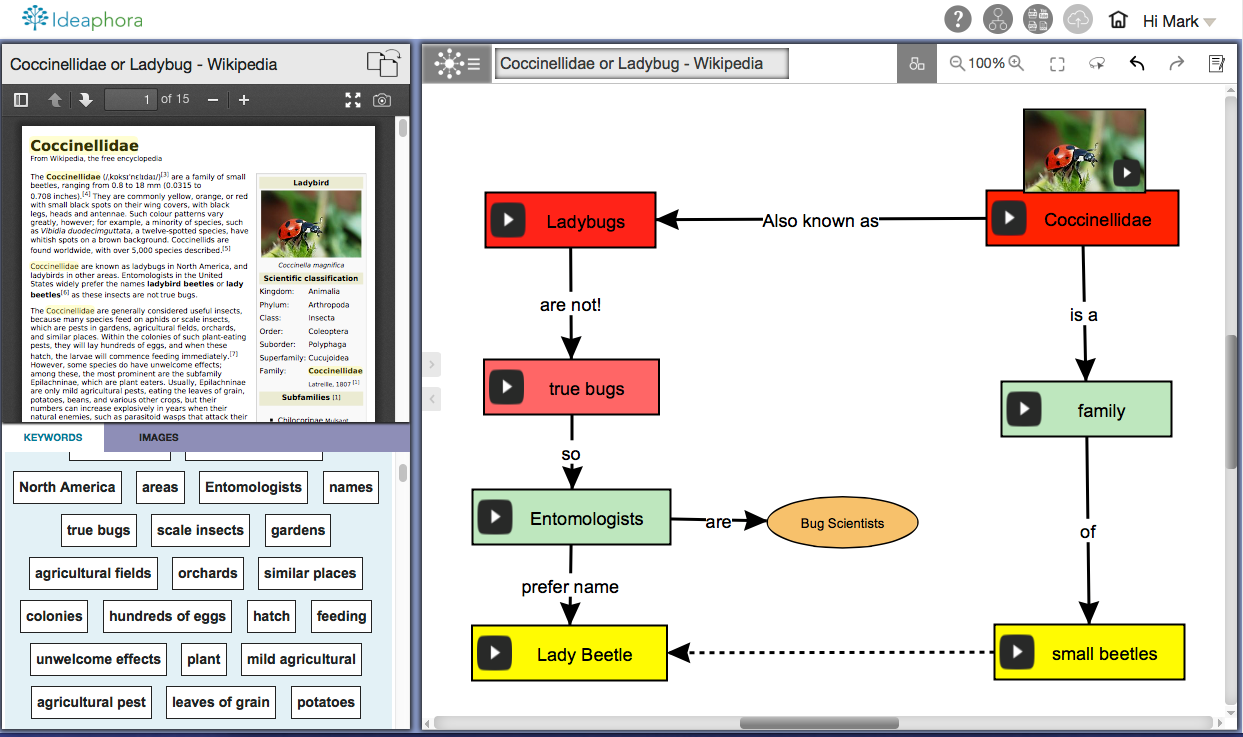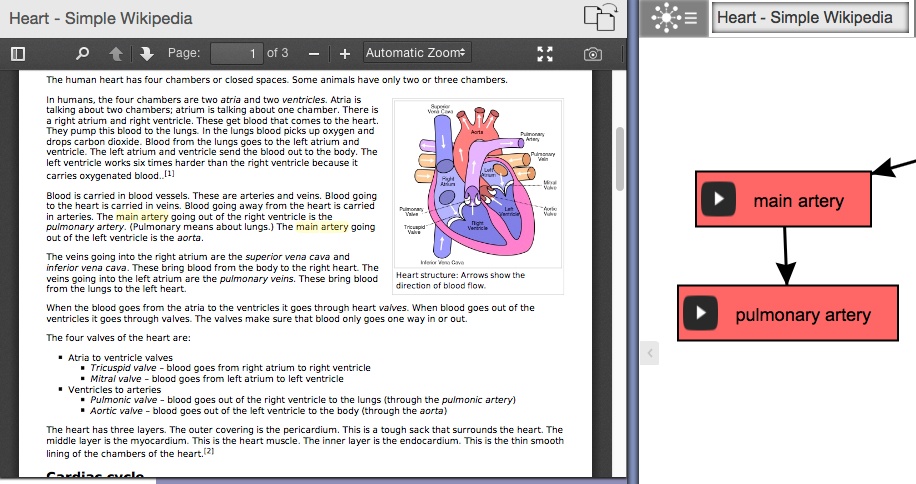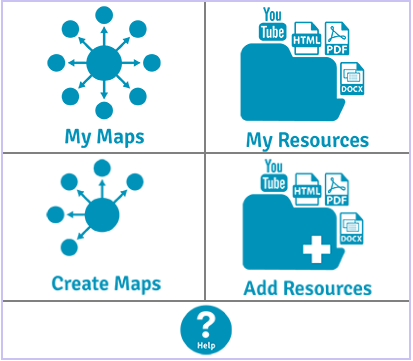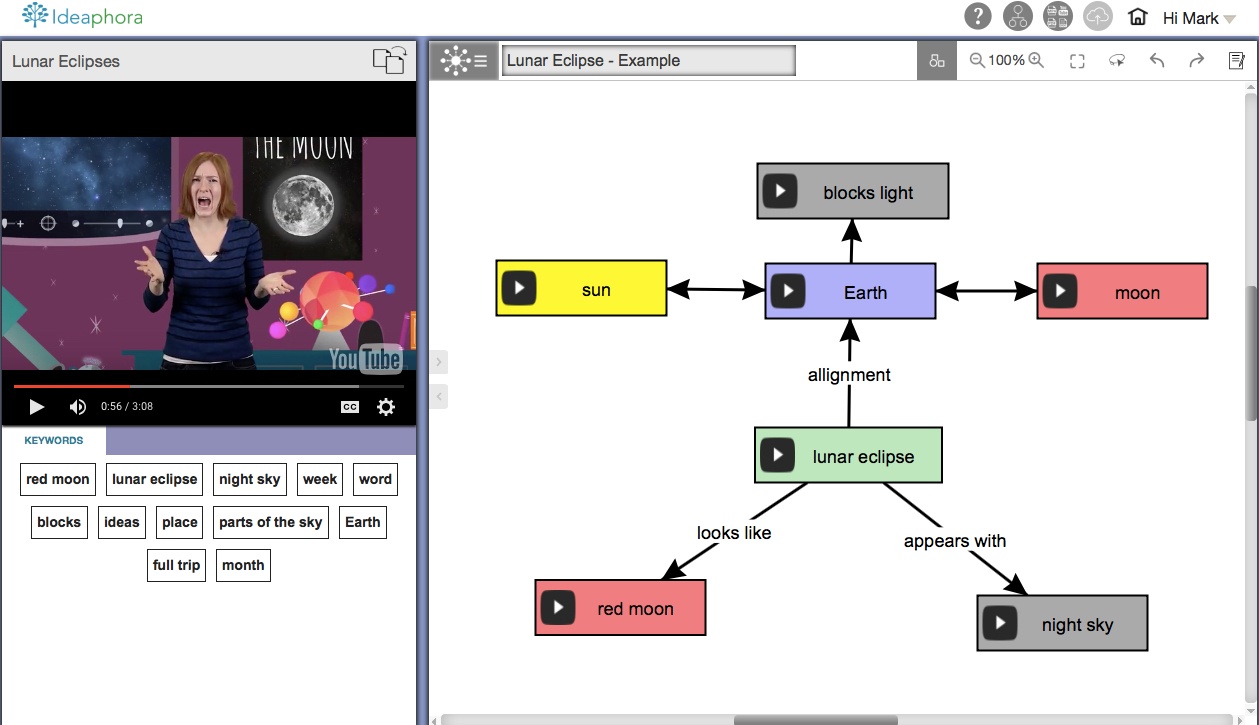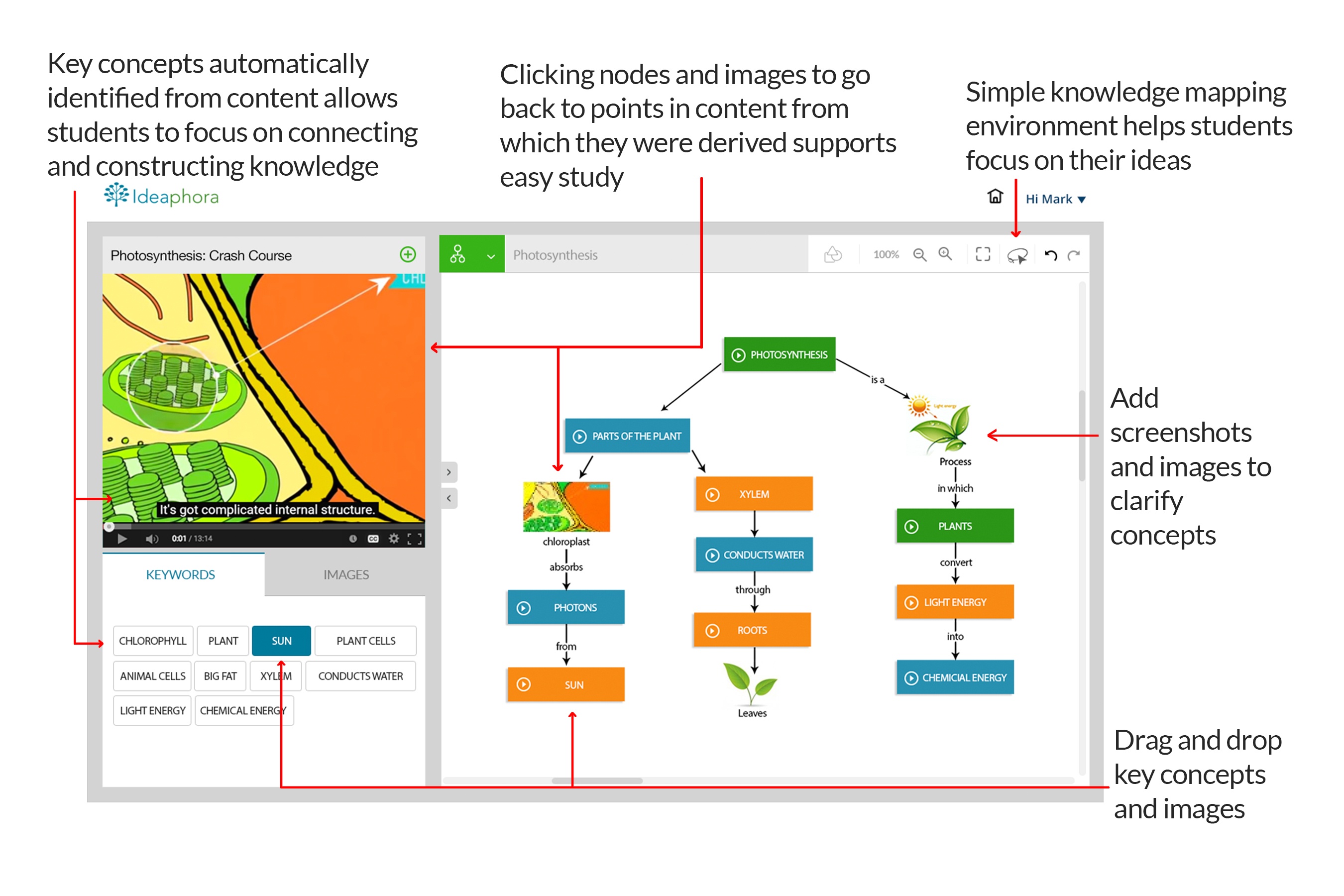Our beta testers and classroom pilots have shared amazing feedback with us over the past few months on what they see as the greatest benefits and features in Ideaphora, as well as what they'd like to see improved. While we started Ideaphora with a roadmap in mind for the product, the ongoing feedback and relationships we have with our users are paramount to our continued success and ensure our knowledge mapping environment evolves with the needs of educators and students at every level. We heard from them that they wanted greater flexibility and customization built into our platform. Today we're unveiling three new features that incorporate their ideas.
Primaries, Debates, Judges, Oh My!
Using Ideaphora to Support Reading Strategies: Part 2
This post is written by Mary Chase, Ph.D., an expert in curriculum design, literacy education, and technology integration.
In my previous post, I explained that reading depends on three cueing systems. As students create knowledge maps of the text they encounter, they not only break down meaning, but also encode it in their memories using all three cueing systems. There's more, though. Ideaphora's visual/verbal mapping environment helps learners tap into the power of dual coding, a cognitive theory proposed by Alan Paivio. Let me illustrate.
Using Ideaphora to Support Reading Strategies: Part 1
This post is written by Mary Chase, Ph.D., an expert in curriculum design, literacy education, and technology integration.
It’s become a truism in education that every teacher is a teacher of reading. Sadly, that sentiment is more wishful thinking than it is a reality. While most teachers recognize that their students need support as they encounter increasingly difficult texts across the curriculum, very few of us have had intensive instruction in reading pedagogy.
New Year, New Updates!
We're at it again. We've added numerous enhancements to the Ideaphora knowledge mapping environment to further improve the user experience for teachers and students. These updates are available to beta users and pilot sites as we move closer to the public launch of our subscription-based tool. During the beta testing phase, everyone can use Ideaphora for free.
The product improvements are focused on four areas:
- Tablet support
- Map sharing
- Content
- Classroom management tools (for pilots)
NEW! Enhancements Added to Our Knowledge-Mapping Environment
Just two months ago, we released the beta version of our web-based knowledge mapping environment and asked educators and friends to join us in the journey and share their feedback to ensure we provide teachers and students with the most effective tool for interacting with digital content, such as videos and ebooks, and deepening their understanding of it. During that short time, we've gained valuable suggestions from testers and incorporated their ideas into our product to enhance and improve the experience for learners. Today we've released several updates that you can experience for yourself.
Historic Day in Education And its Effect on Digital Learning
Making Thinking Visible
At the Content in Context Conference in June this year, Judson Wagner, Supervisor of STEM, CTE, and Instructional Technology at Brandywine School District in Delaware, explained that his hope for the future of education technology was to provide solutions that enable educators to make students' thinking visible. He expounded that he was seeking ways to evaluate when and how student engagement is translating into learning.
Peek Inside Ideaphora's Technology
SEMANTIC ANALYSIS AND HOW IT WORKS
Ideaphora is the only knowledge mapping tool that integrates with digital content, enabling users to directly grab concepts from online materials and place them into their maps. Learners don’t have to fumble with toggling among multiple screens, cutting and pasting, or generating nodes and text themselves.
The Ideaphora web-based knowledge-mapping environment uses semantic analysis to identify key concepts in online content, such as videos, eBooks, PDFs, and webpages. These key concepts are presented to learners and are easily accessed through a drag-and-drop interface to enable them to construct knowledge maps. Ideaphora’s semantic analysis process continually identifies, presents and refines key concepts in the knowledge-mapping environment.
A Perfect Match: Ideaphora and OER
Open education resources (OER) have the potential to increase educator and student access to high-quality learning materials, no matter where they live or what school they are from, as well as help schools reduce costs as they transition to digital learning. The U.S. Department of Education has launched the #GoOpen campaign to encourage more districts, schools and educators to use openly licensed education resources. However, to truly maximize the potential of OER, students need to have opportunites to engage with those materials in ways that deepen their understanding of curriculum concepts and develop their critical thinking skills.

